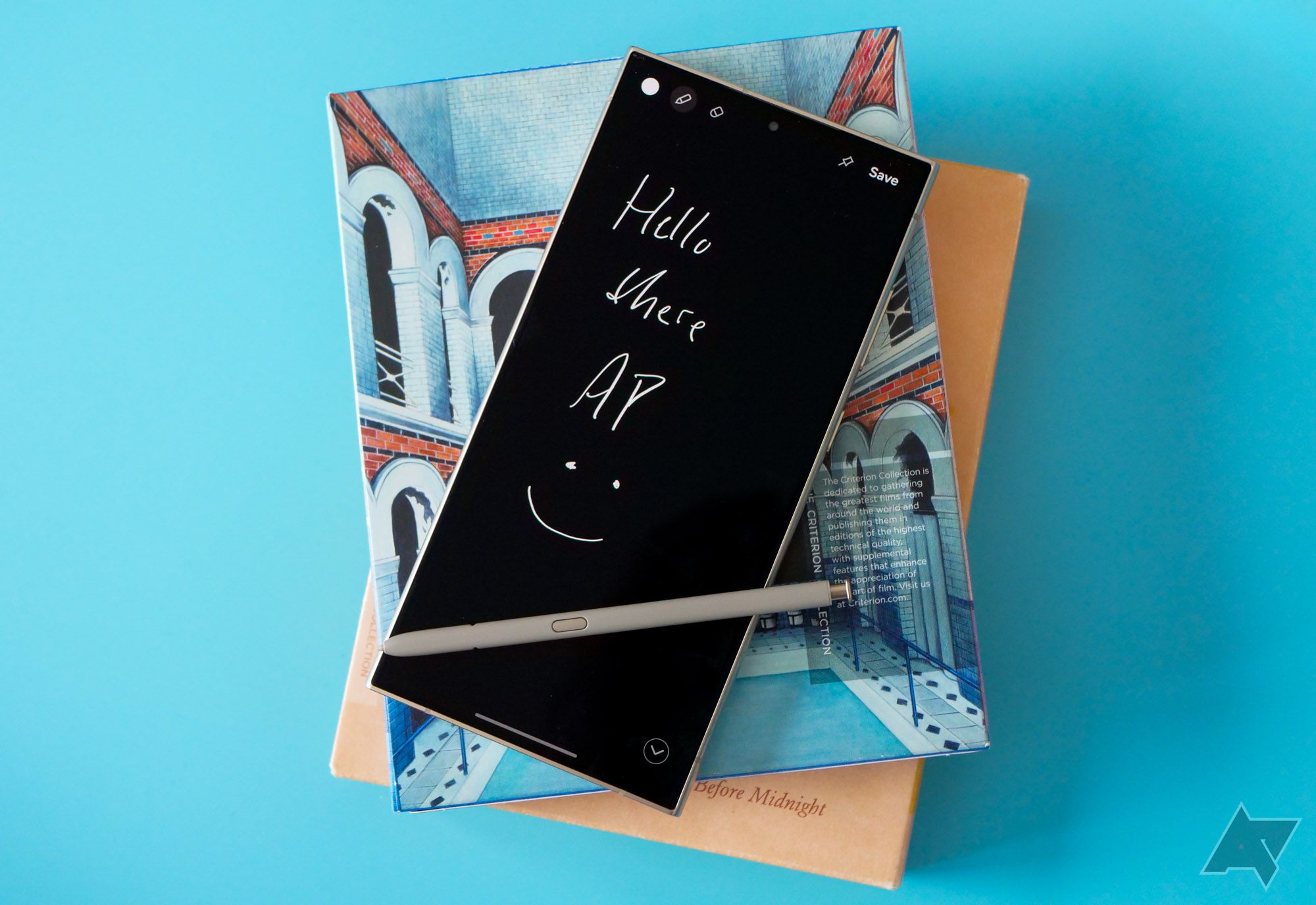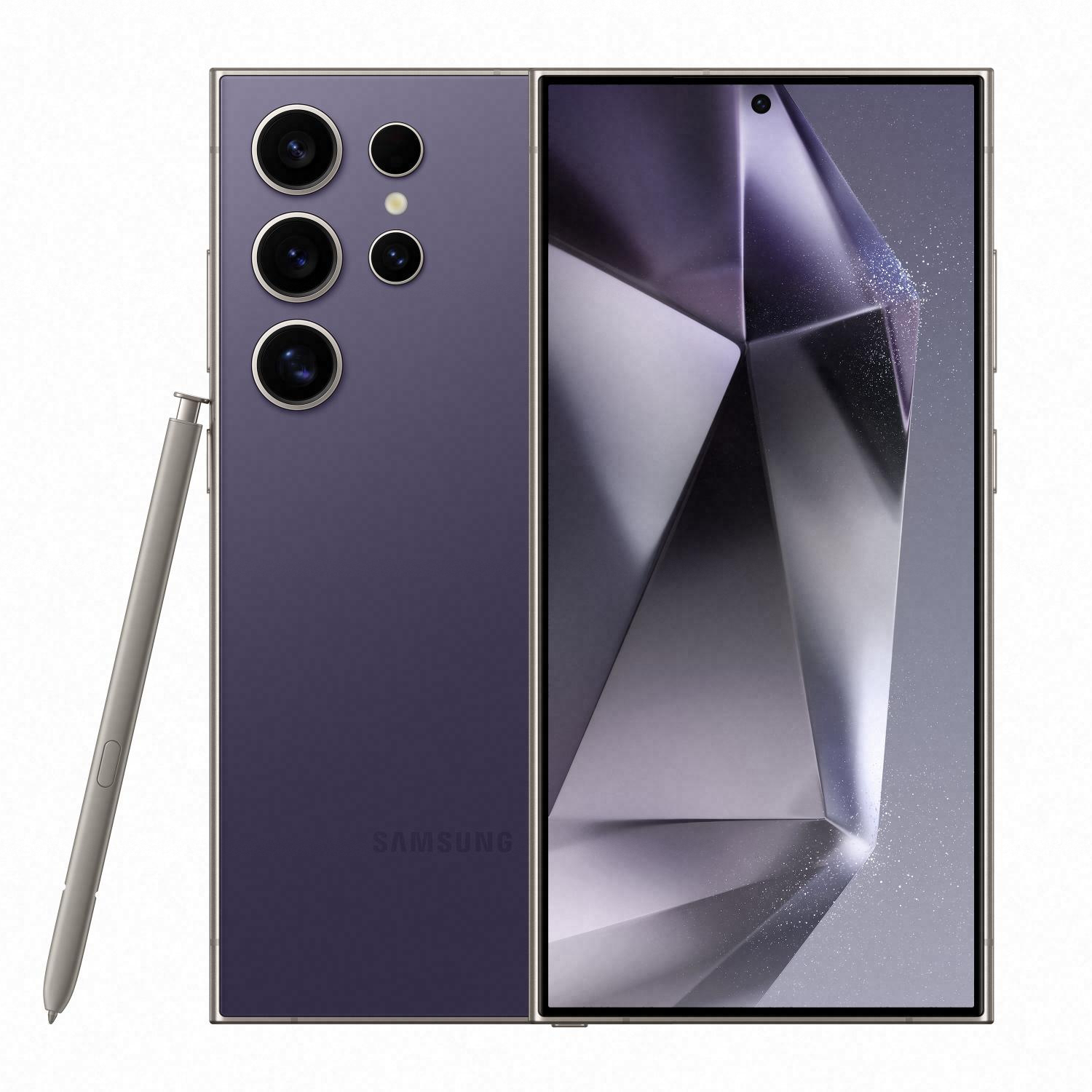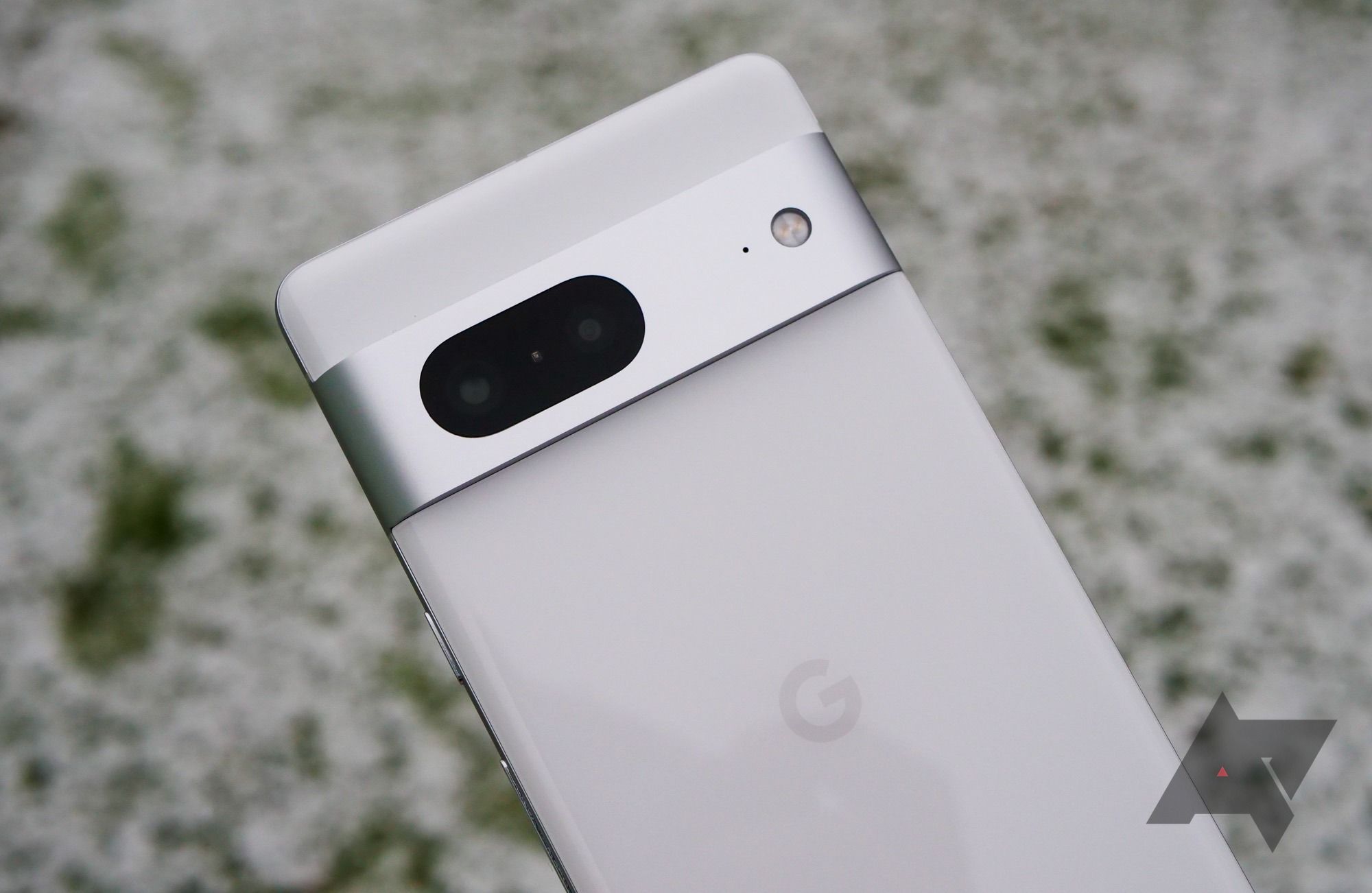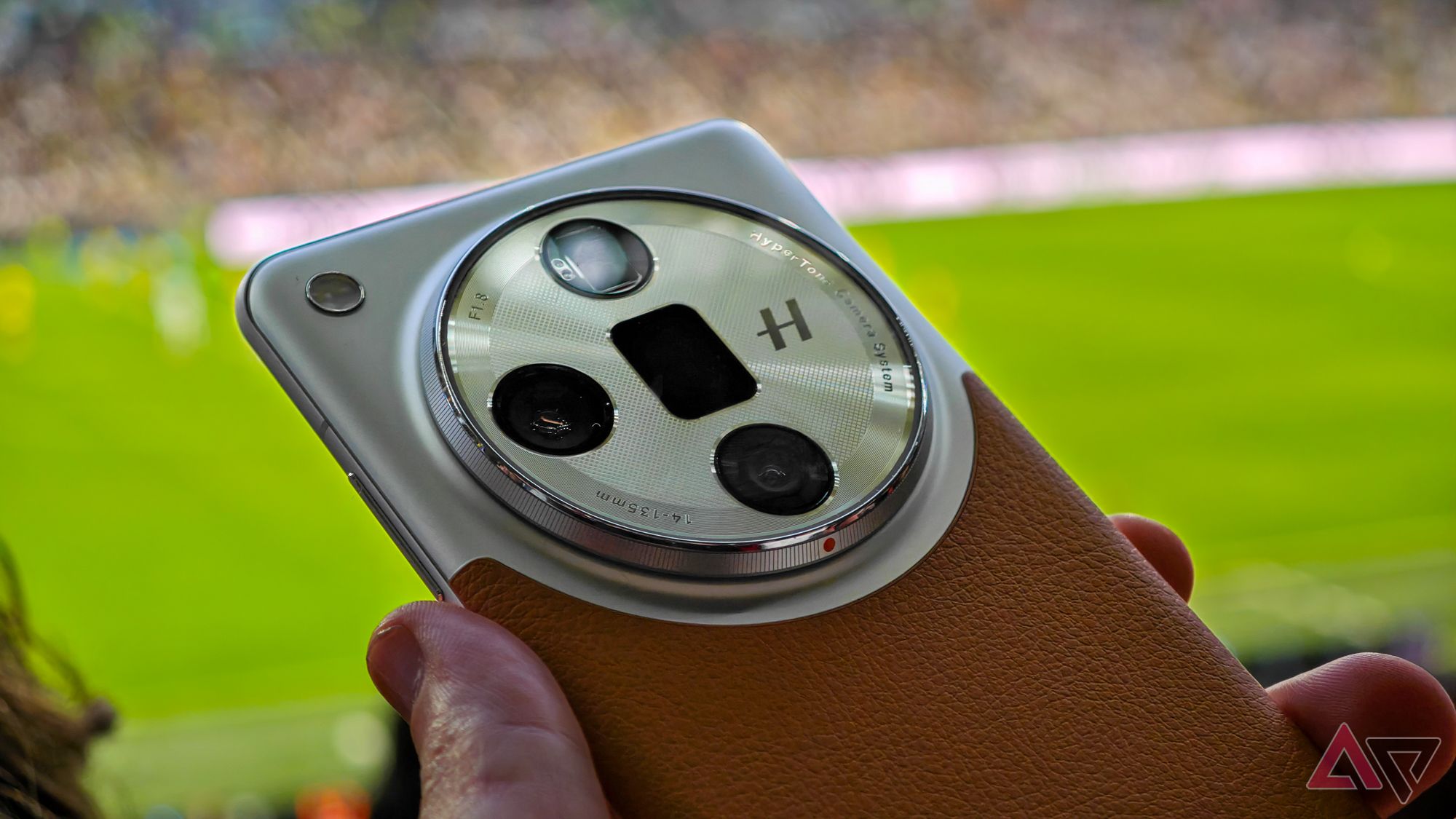Sports photography is its own rarefied art form, and iconic shots define the way we remember the biggest athletes, matches, and moments. The only problem? It’s really hard for the average person to get those shots.
For one, you probably don’t have pitchside access, and instead you’re more likely to be sitting up with the gods looking down on a few pin-sized people sprinting around the field To make matters worse, I’m going to go ahead and guess you don’t have a DLSR with a foot-long telephoto lens handy, so you’ve got to make do with your phone. Luckily for us, there’s no part of the phone camera system that’s improving faster than the telephoto and periscope lenses that now allow us to capture shots at up to 10x zoom — and, thanks to digital trickery, often even further.
So when Oppo invited me to come along to the Champion’s League final between Borussia Dortmund and Real Madrid this past weekend and test out its China-only Find X7 Ultra flagship phone, I jumped at the chance — not least because its unique hardware upgrade is a dual-periscope system. The Find X7 Ultra offers both 3x and 6x telephoto lenses on the back, all with the same Hasselblad tuning found in the company’s OnePlus 12 flagship.
But I didn’t want to give Oppo a free ride, so I grabbed my Samsung Galaxy S24 Ultra too. I wouldn’t say this is the best Android camera phone in the US right now — Google’s Pixel 8 Pro probably takes that honor — but Samsung has always leaned into its ‘Space Zoom’and the S24 Ultra’s 5x periscope lens can be pushed all the way to 100x zoom through the camera app, making it a more fitting rival to Oppo’s latest and greatest.

Samsung Galaxy S24 Ultra review: Still the best, unless you take photos
Without any meaningful changes, Samsung’s latest phablet feels like a do-over for last year’s smartphone
A battle on and off the pitch
From here on out, every camera sample you’ll see was shot with the two phones, with Oppo’s first and the Samsung shot second. I stuck to the default camera photo mode at its default resolution, since that’s the way most people shoot, though on the Oppo I also turned on ‘Action mode’ where appropriate, a quick toggle that’s suited to sports shots and other fast subjects. The S24 Ultra camera app has no equivalent, but blame that on Samsung.
First up, a quick daylight, main camera test for these two cameras to get their bearings. This is the crowd along Wembley Way, the main thoroughfare to London’s Wembley Stadium, with fans already out in force a few hours from kick-off. As you’d expect from the main cameras in relatively good lighting, there’s very little to pull these two phones apart — both shots look great.
Switch to the phones’ telephotos, and it’s a surprisingly similar story. The Oppo’s 6x periscope lens zooms in a touch further than Samsung’s 5x by default, and its colors are a little brighter and more vivid, but both shots pack plenty of detail.
Then for one of only two times during the day, I jumped all the way to each phones max zoom: 120x from the Oppo, and 100x for the Samsung. We’re well past either phone’s optical range now and deep into digital territory, with machine learning doing its best to fill in the visual gaps. The result, from either phone, is something akin to a splodgy watercolor, and I share the shots mostly as a reminder of the limitations here: even in relatively good conditions (admittedly with slow, but moving, subjects) the max zoom here isn’t going to get you very far.
Inside the stadium, it feels fitting to give the phones’ ultrawides a quick go — we all want that expansive, panoramic shot that captures the scale of the event. Again, things are fairly close here. I think the Find X7 Ultra’s larger, higher resolution sensor and faster f/2.0 aperture give it the edge though, with a smaller halo glow around the stadium lights and a more natural hue to the pitch. Meanwhile, the S24 Ultra has made it look positively fluorescent.
I jump back to the periscopes for a better look at the Dortmund fans, who are in full voice with banners and scarves waving. At a glance, these photos look similar enough, but under the bright stadium lighting the Oppo is beginning to find its edge. The Samsung phone has slightly washed out colors, Dortmund’s famous Yellow Wall of fans a touch muted. The real difference is in the movement though: zoom in and you’ll spot that the waving flags are messy and pixelated out of the Galaxy phone, but impressively crisp in the Oppo output. After our S24 Ultra review found even the main camera struggled with fast-moving subjects, this is exactly where I thought we might see problems for the Korean phone.
Sports fixtures present most of the same challenges as concerts: distant subjects, variable lighting, and plenty of movement. Fortunately, the Champions League final packs a bit of both, with a pre-game perfromance from Lenny Kravitz. The lighting is the main change here, with dimmer overhead lighting contrasting with various bright stage lights and the obligatory pyrotechnics.
I stuck with the 6x/5x optical settings here, and the Oppo is the clear winner. Both phones struggled with the bright white lights behind Kravitz’s stage, but the Find X7 Ultra preserved the dynamic range elsewhere, keeping all the shadows and contrast you want in the audience and the foreground dancers, while doing a decent job of exposing the background flames and purple lights. Everything in the Samsung shot is just a little too bright, robbing the scene of its drama and depth.
We’re here for the soccer though, so how does that hold up? At the same zoom level and back under the full stadium lights, these warm-up shots look pretty similar – though things remain just a touch washed out in Samsung’s shot. More tellingly, look at the two players taking shots: in Oppo’s shot the trailing leg is crisp and clear even though it’s hundreds of metres away and moving fast. The S24 Ultra hasn’t done a bad job here by any means, but there’s clearly a little more blur and some lost detail.
This corner kick is similar. The Samsung shot caught the players getting ready, mostly still, and it’s done a great job. But the Oppo photo is pretty remarkable for how crisp it is, given the speed of the players darting forwards in the box – you can even still make out the ball as it cuts across the conveniently timed Oppo ad banner.
That’s at the periscopes’ optical settings. But what if we push the zoom further? I pushed both cameras to 30x zoom for a few photos, about the right distance to have the players fill the frame for punchy, zoomed-in shots. At a glance, these don’t look bad — particularly the Oppo shot, where the text on Rudiger’s shirt is impressively legible. Look closer and you can see plenty of artifacting and issues on both though, and even the grass begins to look wrong if you look too closely, with the telltale signs of AI slop — that’s the machine-learning kicking in.
Neither photo is bad per se, especially given the conditions and distance, but you’re not going to fool anyone into thinking you had front-row seats. It’s also worth noting that I picked out these shots because they are fairly clear, helped by moments where the two players are receiving the ball and moving pretty slowly. Moments of faster action like tackles or shots on goal turned out much more blurry, with significant signs of AI elements trying to plug the gaps, rendering text illegible and faces unrecognizable. The long and short of it: Oppo has the edge, but neither phone holds up at this zoom unless you’re shooting slower moments.
And what about if we really push it, taking things back to that 120x or 100x distance? Honestly, the results are better than I thought they’d be, and the biggest challenge was trying to keep a player in frame to get the shots. But let’s be real: these are blurry, sludgy photos, and neither phone has turned out a result that’s ready for the ‘Gram.
Stick to their strengths, and both phones can impress. I doubt either of these photos would get in the papers (and you can see just how close the pros get for their big shots), but to my eyes they look great. Left to their optical zoom, both periscopes nail the busy trophy celebration, with plumes of smoke and a cloud of confetti, all at 10pm under harsh artificial lighting.
It’s a familiar story though. The Find X7 Ultra’s 6x zoom gets us just a little closer to the action. More importantly, it nails the colors, with dynamic range and deep hues that pass the eye test and capture the scene just a bit better than Samsung’s comparatively pale output.
An impressive performance from a phone you probably can’t buy
There’s not much in it, perhaps to my surprise; I came in suspecting that Oppo might run away with this one, so S24 Ultra owners shouldn’t feel too bad about their purchase, which holds its own impressively. But little by little, Oppo’s flagship pulls away, with deeper dynamic range, richer colors, and especially better capture of moving subjects, which tend to crop up every now and then during soccer matches.
Push the zoom too far and both phones fall apart, but if you know what they can — and can’t — do, then today’s flagships will get you some of the way towards capturing that next iconic sports shot – but you might still want to invest in a seat a little closer to the ac

Samsung Galaxy S24 Ultra
It’s not an overhaul by any means, but even small changes like (finally) swapping back to a flat touchscreen and seven years of system updates help the Galaxy S24 Ultra stand apart from its predecessors. Galaxy AI’s suite of features are front and center, as well as Google’s latest utilities like Circle to Search, and this AI craze even brings its magic to the Ultra’s cameras for after-the-fact super slo-mo.

How to take better photos with your Android phone
It’s time to up your smartphone photography game
Source link



